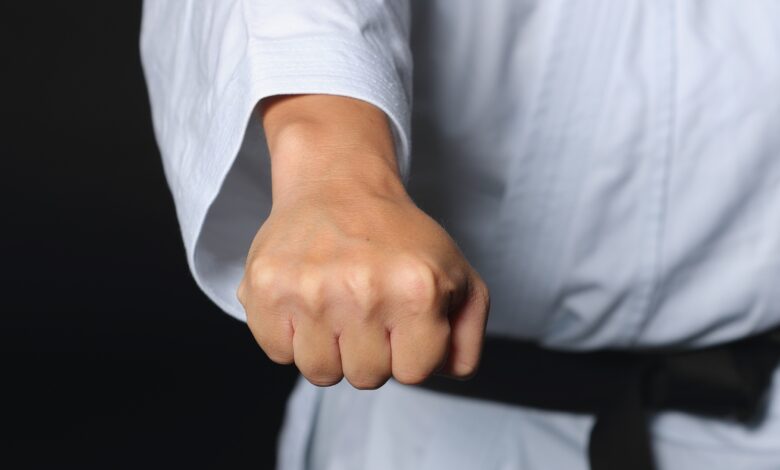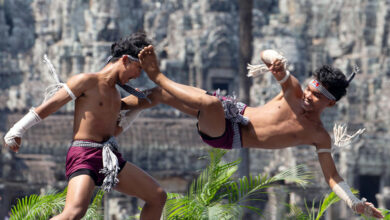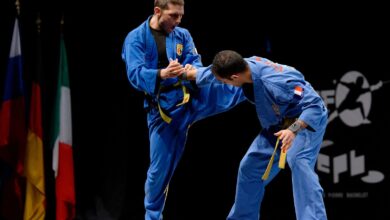
Karate, From Self-Defense to Modern Sport
Martial Arts: Karate, a martial art with roots in the Ryukyu Kingdom (modern-day Okinawa, Japan), has evolved from a traditional self-defense system into a globally recognized sport.
While originally developed as a means of personal protection and disciplined training, Karate has transformed through centuries into a structured, competitive activity with formal rules and international governing bodies like the World Karate Federation (WKF).
Origins: Karate as a Self-Defense System
The earliest form of Karate, known as Te (or “hand”), emerged in Okinawa as a form of unarmed combat. Due to the Ryukyu Kingdom’s restrictions on weapon ownership under Japanese rule in the 17th century, Okinawans refined hand-to-hand techniques to protect themselves. Influences from Chinese martial arts, particularly Fujian White Crane Kung Fu, further shaped Karate, giving rise to distinct styles such as Shuri-te, Naha-te, and Tomari-te.
During this period, Karate was purely a combat system focused on:
- Self-defense against armed and unarmed opponents
- Practical striking and blocking techniques
- Mental and physical discipline
- Training in secret to avoid suppression
Despite its emphasis on real-world application, Karate also incorporated philosophical elements rooted in Confucianism and Zen Buddhism, reinforcing self-control, respect, and perseverance.
The Shift Toward Sportification
In the early 20th century, Karate underwent significant transformation as it moved toward public recognition and structured practice.
1. Gichin Funakoshi and the Introduction to Japan
One of the most influential figures in Karate’s evolution was Gichin Funakoshi, an Okinawan master who introduced the art to mainland Japan in the 1920s.
Funakoshi, often called the “father of modern Karate,” sought to systematize training and align it with Japanese martial traditions, much like Judo and Kendo. He founded Shotokan Karate, emphasizing kata (forms) and kihon (fundamental techniques) over direct combat.
Funakoshi’s approach helped establish Karate as a disciplined martial art, paving the way for its inclusion in educational institutions, including Tokyo’s universities.
2. The Rise of Competition-Based Karate
While early Karate masters focused on preserving combat realism, the mid-20th century saw an increasing shift toward sport Karate:
- Introduction of point-based sparring (kumite) to encourage safe competition
- Emphasis on technical precision over brute strength
- Formation of national and international Karate organizations to govern the rules of competition
Notably, Mas Oyama’s Kyokushin Karate developed a full-contact variation, while others, like the Japan Karate Association (JKA), refined non-contact tournament formats.
The Role of the World Karate Federation (WKF)
A crucial step in Karate’s sportification was the establishment of the World Karate Federation (WKF) in 1990, which became the primary governing body for international Karate competition. The WKF played a central role in:
- Standardizing competition rules for kata and kumite
- Organizing world championships and ranking systems
- Pushing for Olympic recognition
With over 190 member nations, the WKF remains the most influential body in shaping modern Karate as a sport.
Karate in the Olympics: A Milestone for Sport Karate
After years of effort, Karate made its Olympic debut at the Tokyo 2020 Games, marking a historic moment for practitioners worldwide. The event featured:
- Kata (individual forms)
- Kumite (sparring) in different weight categories
While Karate was not included in the Paris 2024 Olympics, its Olympic presence solidified its status as a globally recognized sport.
Challenges and Debates: Sport vs. Traditional Karate
Despite its success as a sport, Karate’s evolution has sparked debate among traditionalists who argue that:
- Sport Karate prioritizes points over real-world effectiveness
- Traditional values and philosophy are diluted
- Full-contact Karate, such as Kyokushin, offers a more realistic approach
On the other hand, supporters of sport Karate highlight its global accessibility, structured development, and potential to inspire new generations.
A Balancing Act Between Tradition and Sport
Karate’s journey from a self-defense system to a competitive sport reflects its adaptability and resilience. While the sportification of Karate has brought increased visibility and participation, maintaining a balance between tradition and competition remains a challenge.
Whether practiced for self-defense, discipline, or sport, Karate continues to evolve, shaping the lives of millions worldwide. The future of Karate will likely see ongoing efforts to preserve its historical roots while embracing its role as a modern sport.



